A century of astronomy revealed Earth’s place in the universe
A series of revolutions in astronomy have bumped us from the center of things

Clusters of stars like this one helped show that the Milky Way is enormous and just one of many galaxies. The glittering young stars in this Hubble Space Telescope image are about 20,000 light-years away in the constellation Carina.
NASA, ESA, The Hubble Heritage Team/STSCI and AURA, A. Nota/ESA and STSCI, and the Westerlund 2 Science Team
- More than 2 years ago
A century ago, the Milky Way galaxy was the entirety of the known universe. We had no idea what made the stars shine, and only one star — our own sun — was known to harbor any planets. Of those planets, humans had explored only one: Earth.
“The stellar universe, as we know it … is a flattened, watch-shaped organization of stars and nebulae,” astronomer Harlow Shapley wrote in Science News Bulletin, the earliest version of Science News, in August 1921 (SN: 8/8/1921, p. 3). That sparkling pocket watch was the Milky Way, and at the time Shapley wrote this, astronomers were just beginning to conceive that anything at all might lie beyond it.
Today, spacecraft have flown by every one of the solar system’s planets, taking close-ups of their wildly alien faces. The solar system, it turns out, contains a cornucopia of small rocky and icy bodies that have challenged the very definition of a planet. Thousands of planets have been spotted orbiting other stars, some of which may have the right conditions for life to thrive. And the Milky Way, we now know, is just one of billions of galaxies.

This article is from a series celebrating some of the biggest advances in science over the last century. For an expanded version, visit Century of Science: Other worlds.
The last 100 years have brought a series of revolutions in astronomy, each one kicking Earth a bit farther from the center of things. Along the way, people have not exactly been receptive to these blows to our home planet’s centrality. In 1920, the question of whether there could be other “island universes” — galaxies — was the subject of the Great Debate between two astronomers. In the 1970s, when Mars was shown to have a pink sky, not blue, reporters booed. Their reaction “reflects our wish for Mars to be just like the Earth,” said astronomer Carl Sagan afterward. And in the 1990s, astronomers almost missed extrasolar planets hiding in their data because they had tailored their search techniques to find planets more like those in our own solar system.
But turning our focus from Earth has opened our minds to new possibilities, new universes, new places where life might exist. The next century of astronomy could bring better views of our cosmic origins and new strategies for finding worlds that other creatures call home.
The misperceptions of decades past suggest scientists should be careful when predicting just what we’ll find in the future.
“You learn a lot of humility in this business,” says planetary scientist Candice Hansen of the Planetary Science Institute, based in Tucson. “You always learn a lot more when you’re wrong than when you’re right.”
Sign up for our newsletter
We summarize the week's scientific breakthroughs every Thursday.
More than the Milky Way
At the turn of the 20th century, conventional wisdom held that the Milky Way stood alone. It contained stars, sometimes organized in clusters, and fuzzy patches of light known as nebulae. That was about it.
Some nebulae had spiral structures, “appearing in the telescope like vast Fourth-of-July pinwheels,” as Science News Letter, the predecessor of Science News, described them in 1924. In the 18th century, German philosopher Immanuel Kant had described nebulae as “higher universes,” or, “so to speak, Milky Ways.” But by the early 1900s, most astronomers thought that drawing that parallel was ridiculous.
“No competent thinker,” wrote historian of astronomy Agnes Clerke in 1890, can “maintain any single nebula to be a star system of coordinate rank with the Milky Way.”
By the 1920s, though, that view was already being challenged. As early as 1914, astronomer Heber Curtis of Lick Observatory in California argued that spiral nebulae are not part of the Milky Way, but rather “inconceivably distant galaxies of stars or separate stellar universes so remote that an entire galaxy becomes but an unresolved haze of light.”
Around the same time, Shapley, of Mount Wilson Observatory in California, began to prove that the Milky Way itself was inconceivably vast.
Shapley built on work by Henrietta Leavitt, one of a group of women “computers” at Harvard University who pored over photographic plates capturing the night sky. In studying photographs of the Magellanic Clouds, which we now know are two small galaxies that orbit the Milky Way, Leavitt noticed that certain stars varied in brightness over time, some of them in a peculiar way. “It is worthy of notice,” she wrote in 1908, that “the brighter variables have the longer periods.” In other words, brighter stars twinkled more slowly.

That meant that these variable stars, called Cepheids, could be used to estimate cosmic distances. It’s hard to tell how far away a cosmic object truly is — bright-looking stars could be intrinsically dim but close, while faint-looking stars could be intrinsically bright but distant. But all the Cepheids within the same cloud should be roughly the same distance from Earth. That meant “their periods are apparently associated with their actual emission of light,” Leavitt wrote in 1912. To figure out any Cepheid’s true brightness, all an astronomer had to do was measure its twinkling speed. It was a short step from there to figuring out its distance.
Shapley put this fact to use just a few years later, measuring distances to Cepheids within globular clusters of stars to figure out the sun’s position in the Milky Way. To his surprise, the sun was not in the center of the galaxy but off to one side. The Milky Way’s starry disk was also about 10 times wider than previous astronomers had assumed: about 300,000 light-years across, according to his calculations. (He overshot a bit; modern astronomers think it’s somewhere between 120,000 and 200,000 light-years.)
He and Curtis took their opposing views to the public at a meeting of the National Academy of Sciences in Washington, D.C., in April 1920, in an event that became known as the Great Debate. Each had 40 minutes to present their views on whether there is only one or several universes — what we now think of as galaxies.
Shapley, who was in his 30s and considered a rising star in the field, went first. A former journalist who reportedly was uncomfortable speaking to crowds, he read his argument from a typewritten script. He barely touched on the question of other universes, focusing instead on his new measurements of the Milky Way’s size. The implication was that the Milky Way was too large for other galaxies to make sense.
Curtis was an older, well-respected authority on spiral nebulae, as well as a gifted speaker. He argued for the then-standard view that the Milky Way was much smaller than Shapley supposed. But even a large Milky Way shouldn’t negate the possibility of other, equally large galaxies, he argued. The spectra of light coming from spiral nebulae was similar enough to that of the Milky Way that they could be similar objects, he maintained.
Both astronomers were partly right, and partly wrong.
Galaxies come into view
The Great Debate was resolved by a young astronomer named Edwin Hubble working at Mount Wilson. Hubble also used Leavitt’s Cepheid variable technique to measure cosmic distances, this time by finding the variable stars in the spiral nebulae themselves.
Hubble started observing the Andromeda nebula, one of the brightest nebulae on the sky, in the fall of 1923. He used Mount Wilson’s 60-inch telescope and its 100-inch telescope, then the world’s largest. Over the next year or so, he studied 35 Cepheids in Andromeda and a different nebula called Triangulum. Their periods were long enough that the nebulae had to be on the order of a million light-years away for the stars to appear so faint. (We now know it’s more like 2.5 million light-years to Andromeda and 2.7 million to Triangulum.)
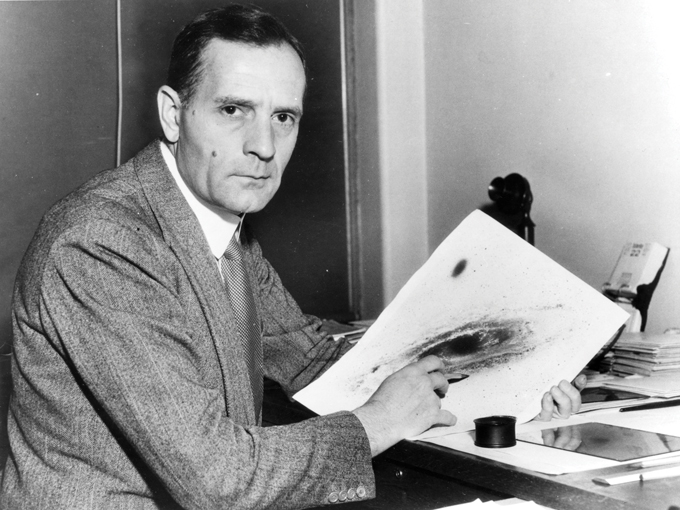
“Measuring the distance to Andromeda was a big deal because it was the first evidence that there are galaxies beyond our own,” says astronomer Emily Levesque of the University of Washington in Seattle. “It changed what we thought of as the shape of our universe.”
A few hints that the Milky Way was not alone had cropped up before that, but Hubble’s finding clinched it. Even if the Milky Way was as big as Shapley claimed, Andromeda lay outside its borders. When Shapley received Hubble’s paper, he reportedly said, “Here is the letter that destroyed my universe.”
Science News Letter reported Hubble’s finding under the headline “Sky Pinwheels Are Stellar Universes 6,000,000,000,000,000,000 Miles Away” in December 1924 (SN: 12/6/24, p. 2).
“It seems probable that many of the smaller spiral nebulae are still more remote and appear smaller on this account,” the story quotes Hubble as saying. “The portion of the universe within the range of our investigation consists of vast numbers of stellar galaxies comparable to our own, scattered about through nearly empty space and separated from one another by distances of inconceivable magnitude.” Here at last was the modern view of the universe.
By the end of the decade, Hubble had not only shown that the spiral nebulae were “island universes,” he also had begun to classify different galaxy types and think about how they evolved over time. What’s more, he showed that galaxies were flying away from each other at speeds proportional to their distance. In other words, the universe was expanding.
By the end of the century, astronomers knew that the universe was dotted with billions of galaxies of all shapes and sizes. In April 1990, NASA launched the first optical space telescope into Earth’s orbit, giving the world a new perspective on space.
“Instead of these blurry blobs from even the best mountaintop observatories on our planet,” says planetary scientist Jim Bell of Arizona State University in Tempe, “all of a sudden the entire realm of solar system, galaxy, extragalactic … was opened up by getting above the atmosphere.”
NASA named the telescope after the scientist who opened astronomers’ minds to the existence of such a universe: the Hubble Space Telescope.
The images it has captured over 30 years of operations — star clusters, galaxies and nebulae — are so iconic they are printed on everything from socks and coffee mugs to high fashion runway designs. The telescope itself was recently immortalized in Lego form.
“It’s the one that literally everyone has heard of,” says Levesque. Most people today think Hubble was “the guy who built the telescope.”
One image from early on in the space telescope’s tenure stands out. In December 1995, the telescope’s director, Robert Williams, decided to train the observatory on a tiny, dark patch of sky near the handle of the Big Dipper for 10 consecutive days. The resulting portrait of this featureless bit of sky revealed thousands of previously unknown galaxies sending their light from farther away than astronomers had ever seen before (SN: 1/20/96, p. 36). The universe as Edwin Hubble had imagined it, chock-full of island universes, was captured in one hard look.
As for Henrietta Leavitt, she missed out on the recognition she deserved for helping knock the Milky Way from its central perch. A Swedish mathematician wrote to her in 1925 saying that her work “has impressed me so deeply that I feel seriously inclined to nominate you to the Nobel Prize in physics for 1926.” He received a reply from Shapley, by then director of the Harvard College Observatory: Leavitt had died four years earlier.
Bizarre beauties
In the 1960s, astronomer Halton Arp proposed that researchers use the weirdest-looking galaxies as natural experiments to learn what gives a galaxy its shape. To help researchers figure out what makes a galaxy spiral, blobby or some other shape, Arp published the 1966 Atlas of Peculiar Galaxies, a compilation of 338 galaxies sorted by appearance.
Arp’s categories were spiral, elliptical, neither spiral nor elliptical, double and none of the above. At the time, some of the galaxies had no names or designations, and are still best known by their Arp numbers, like Arp 273 and Arp 147.
Despite their diversity, most of the peculiar galaxies are now thought to be going through a merger or interacting with another galaxy. But Arp never bought that explanation. He claimed for years that galaxies’ shapes come from material ejected from their luminous cores. Here are six of the most beautiful and bizarre galaxies, as seen by the Hubble Space Telescope and others, which offer much greater detail than Arp had access to half a century ago. — Lisa Grossman
Tap images to enlarge
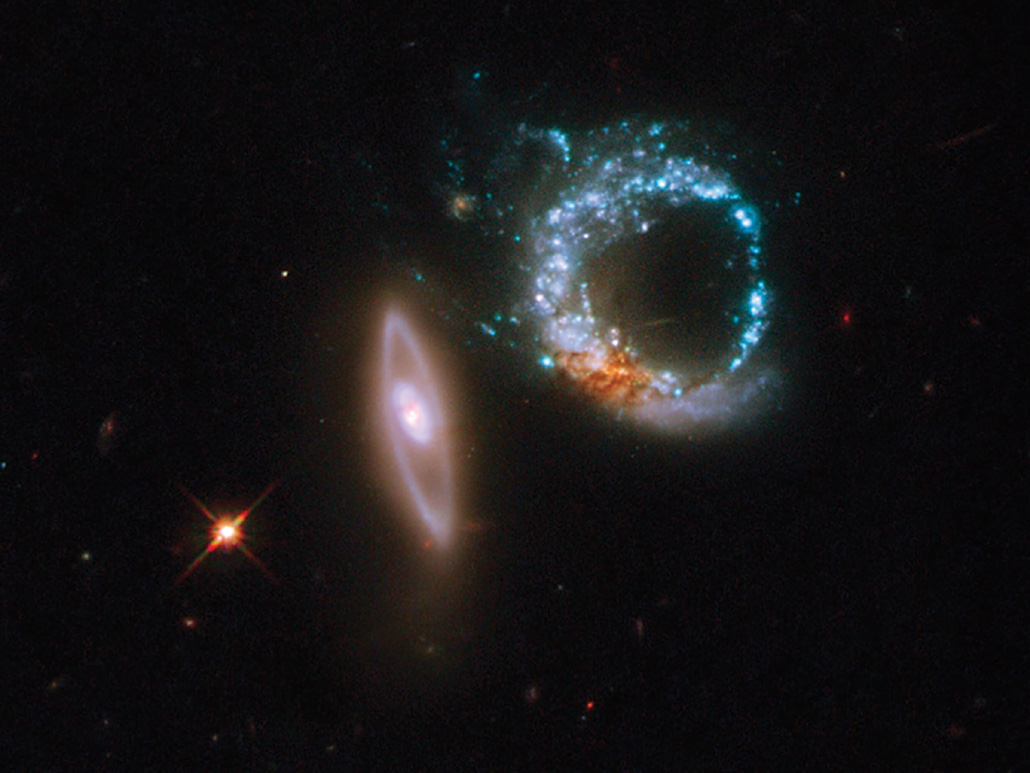
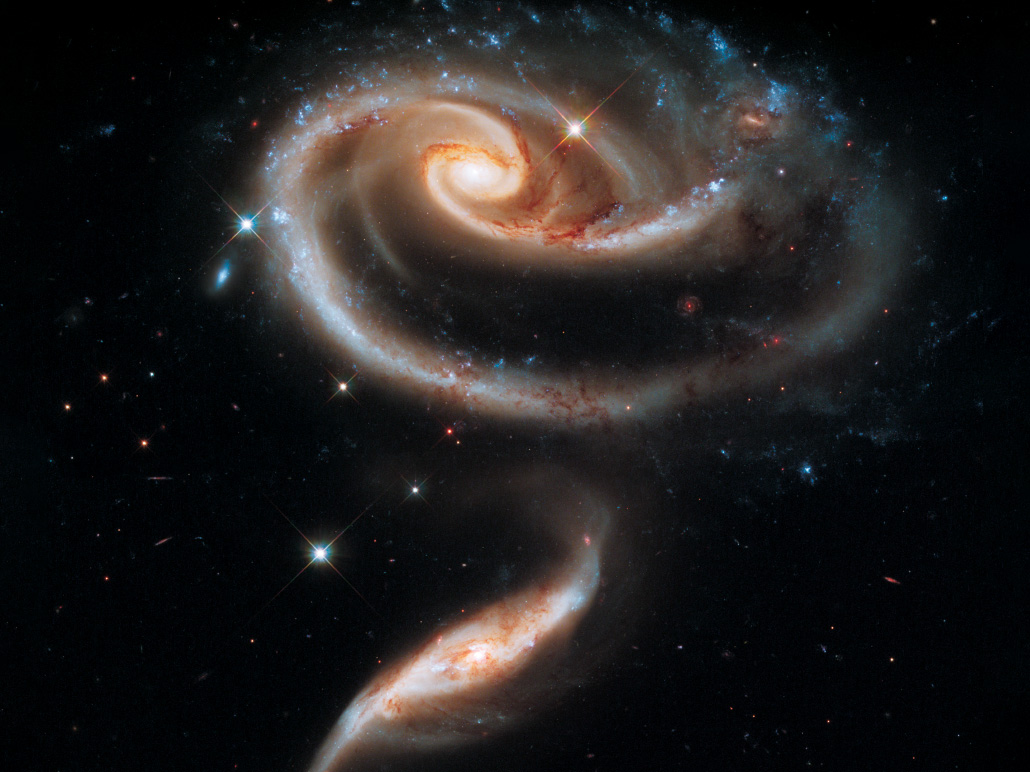
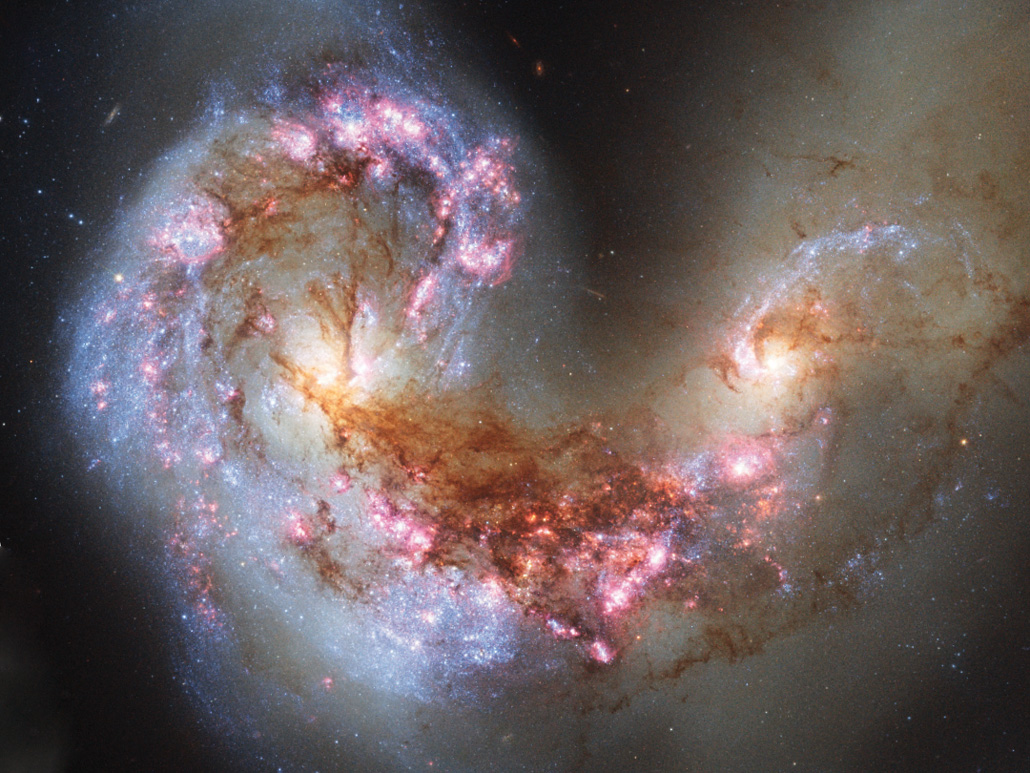
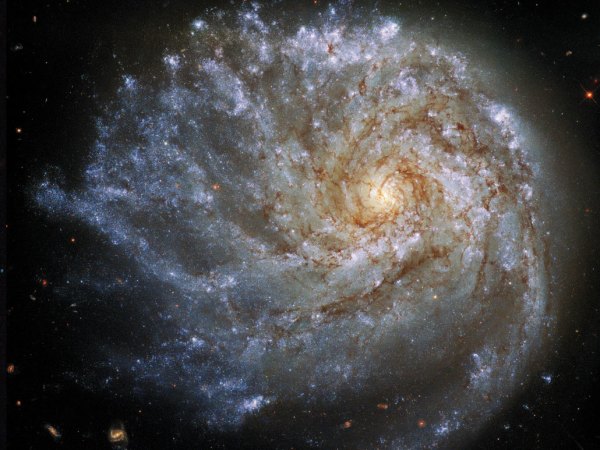
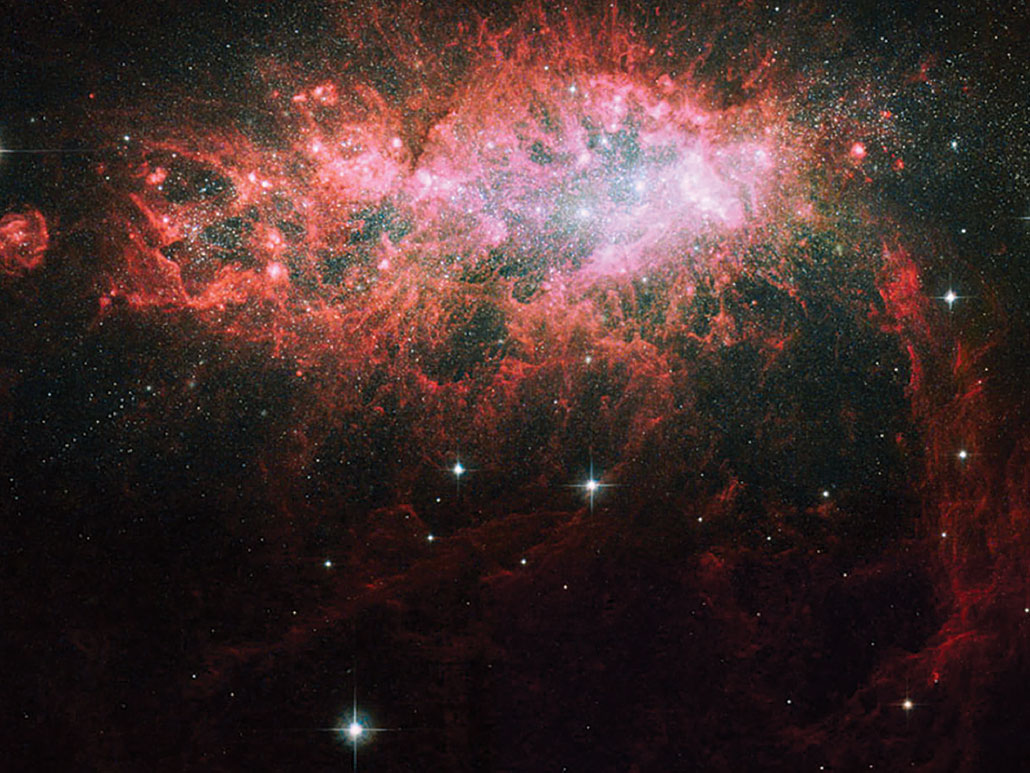
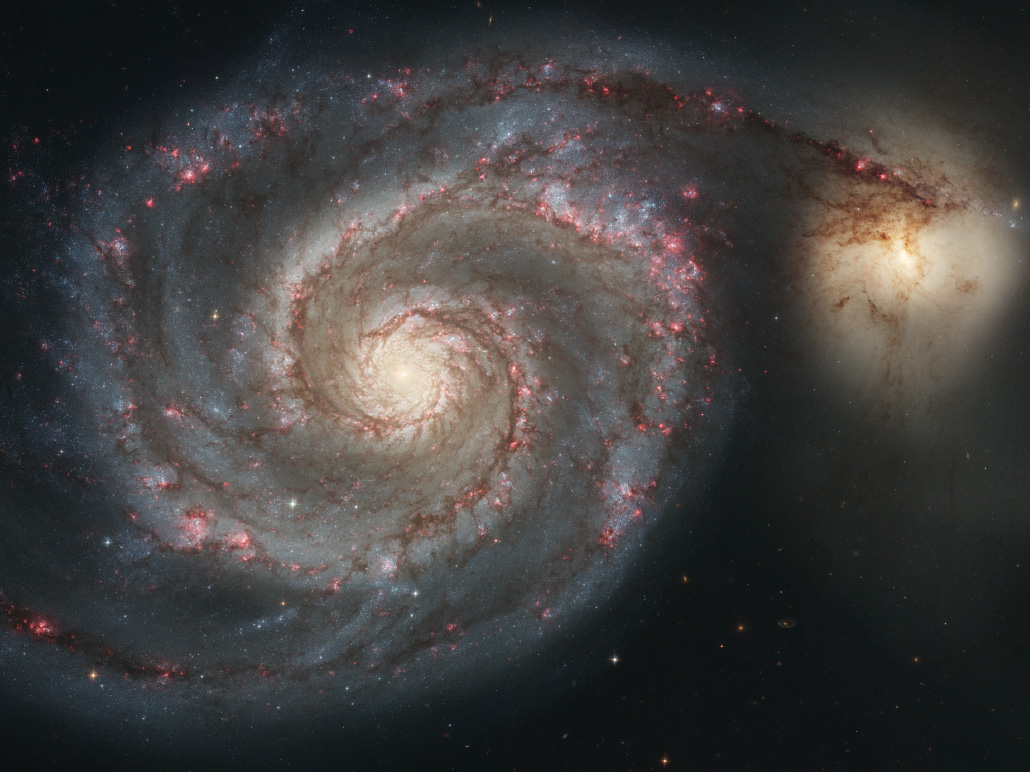
Steps to Mars
The first liquid-fueled rockets, precursors to the ones that later carried robots and people into space, launched in the 1920s. A century later, robots have flown past, orbited or landed on every planetary body that was known in 1920, and a few that weren’t. People have walked on the moon and have lived in space for more than a year at a time. And serious talks about sending people to Mars are in the works.
NASA used to explore other worlds in a clear order, first observing with telescopes and then carrying out increasingly complex missions: flybys, orbiters, landers, rovers, then people and sample returns. “We’ve taken that entire progression on the moon, in [the last] century,” Bell says. “Sometime in this new century, we’ll add Mars to that list. All the rest of the solar system, we’ve got large chunks of that matrix checked off.”
After the Soviet Union launched the first artificial satellite, Sputnik 1, in 1957, space launches came fast and furious. Many were demonstrations of political and military might. But a lot of them had scientific merit, too. The Soviet Luna 3 spacecraft photographed the farside of the moon in 1959 — shortly after NASA’s founding. Spacecraft flew past Venus and Mars in the 1960s, sending back the first closeup data on their alien atmospheres and surfaces.
That same decade, humans landed on the moon and brought back rocks, opening a wide and detailed window into the history of the solar system. The lunar samples from the Apollo missions gave scientists a way to figure out how old planetary surfaces are around the solar system, taught us that the entire inner solar system was bombarded with impacts in its youth and gave us an origin story for the moon (SN: 7/6/19 & 7/20/19, p. 18).
“Until we started the space program, we really had no idea what the geology was on other places,” says Hansen of the Planetary Science Institute. “Early in the century, they were still debating whether the craters on the moon were impact craters or volcanic calderas. Even right there in our own backyard, we didn’t know what was going on.”
And extraterrestrial geology was surprising. Without meaning to, planetary scientists had based a lot of their expectations for other worlds on the Earth. The cover of Science News from June 1976, the month before NASA’s Viking 1 lander became the first long-lived spacecraft to land softly on Mars, showed Mars with a Cheez Whiz–colored desert under a clear blue sky. In the sleep-deprived rush to release the first color images sent back by Viking 1, scientists processed the image to produce a blue sky there, too.
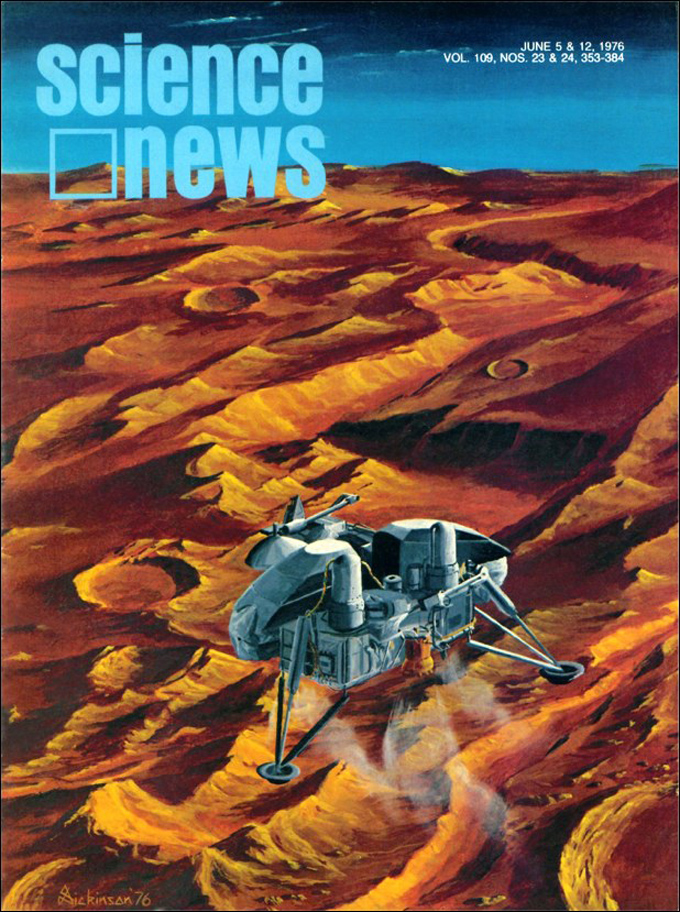
But the day after the landing, James Pollack of the imaging team told reporters that the Martian sky was actually pink, probably thanks to scattered light from dust particles suspended in the air.
“When we found the sky of Mars to be a kind of pinkish-yellow rather than the blue which had erroneously first been reported, the announcement was greeted by a chorus of good-natured boos from the assembled reporters,” Sagan later wrote in the introduction to his popular book Cosmos. “They wanted Mars to be, even in this respect, like the Earth.”
Still, the Viking 1 and 2 landings brought Mars down to Earth, so to speak. “Mars had become a place,” Viking project scientist Gerald Soffen said in an interview for a NASA historical project published in 1984. “It went from a word, an abstract thought, to a real place.”
In some ways, the Viking landers’ views of Mars were disappointing. The mission’s central goal was explicitly to search for microbial life. It was “a long shot,” journalist Janet L. Hopson wrote in Science News in June 1976 (SN: 6/5/76, p. 374). But “even if no signs of life appear, [biologists] stand to gain their first real perspective on terrestrial biochemistry, life origins and evolution.”
The results of the Viking mission’s life-detection experiments were inconclusive, a finding almost worse than a true negative.
NASA subsequently pulled back from seeking life directly. The next 45 years of Mars missions searched for signs of past water, potentially habitable environments and organic molecules, instead of living organisms. All of those features turned up in data from the Spirit, Opportunity and Curiosity rovers in the 2000s and 2010s.
Now, NASA’s Perseverance rover, which landed in February 2021, is hunting for signs of ancient microbial life. The rover will cache rock samples that a future mission will bring back to Earth. And the joint Russian and European space agencies’ ExoMars rover — named Rosalind Franklin, after the chemist whose work was central to discovering DNA’s structure — aims to seek molecular signatures of life on Mars and just below the surface after it launches in 2022.
Sagan predicted in 1973 that if he had been born 50 years in the future, the search for life on Mars would have already been completed. Today, 48 years later, we’re still looking.
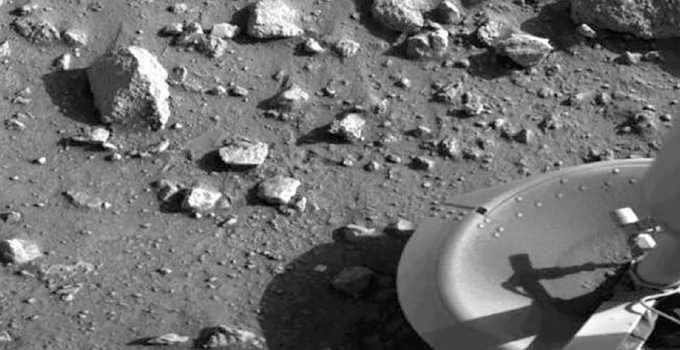
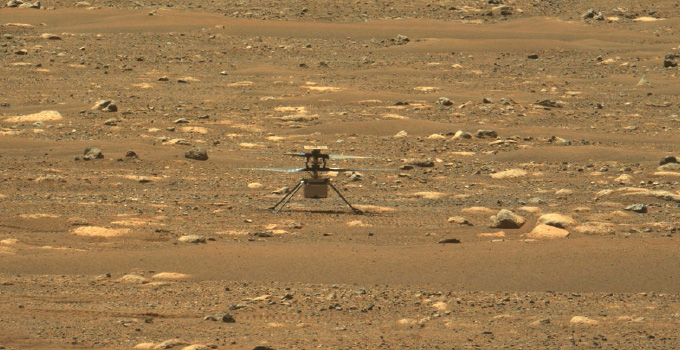
Exotic moons
The year after the Vikings landed on Mars, another pair of spacecraft launched to check almost the entire rest of the solar system off scientists’ must-see list. Astronomers realized that in 1977, the planets would line up in such a way that a spacecraft launched that year could reach Jupiter, Saturn, Uranus and Neptune one by one, stealing a little angular momentum from each world as it went along. The mission was dubbed Voyager (SN: 8/27/77, p. 132).
“There’s never been anything like it, and there never will be again,” says Bell, of Arizona State. “It was comparable to the voyages of Magellan or Darwin or Lewis and Clark. Just an absolutely profound mission of discovery that completely changed the landscape of planetary science in this century.”
Voyager’s views of the outer solar system forced scientists to think outside of the “Earth box,” says Hansen, who worked on the mission. “The Voyager imaging team, bless their hearts, they would make predictions and then they’d be wrong,” she says. “And we would learn something.”
Hansen recalls chatting with a member of the imaging team when the spacecraft was approaching Jupiter and its dozens of moons. “He said, ‘Candy, we will see craters on [moons] Io and Europa, because we know from the density that those are rocky worlds. But not on Ganymede and Callisto, because those are ice,’ ” she recalls. Instead, the images showed Ganymede and Callisto were covered in craters. “That was an aha moment — ice is going to act like rock at those temperatures.” Meanwhile, ocean-swathed Europa and molten Io had almost no craters.
The moons of Jupiter presented “a whole, previously unimagined family of exotic worlds, each radically different not only from its companions, but also from everything else in the planet-watcher’s experience,” journalist Jonathan Eberhart wrote in Science News in April 1980 (SN: 4/19/80, p. 251).
Before 1979, Earth was the only geologically active, rocky world scientists knew about. But Voyager changed that view, too. A member of Voyager’s optical navigation team, Linda Morabito, spotted an odd, mushroom-shaped feature extending off the edge of Io while she was trying to plot the spacecraft’s position on March 9, 1979. She consulted with the science team, and they soon realized they were looking at a gigantic volcanic plume. Io was erupting in real time.
Three planetary scientists had predicted Io’s fire before the plumes were discovered. The three suggested the moon was heated by a gravitational tug-of-war between Jupiter and one or two of its other moons, Europa and Ganymede.
But most of the planetary science community was stunned. “We take gravity for granted here. It keeps our feet on the ground,” Hansen says. “But gravity molds and shapes so many things in so many unexpected ways.”
Voyager and subsequent missions to the outer planets, like Galileo at Jupiter in the 1990s and Cassini at Saturn in the 2000s, transformed our view of the solar system in another profound way. They revealed several surprising parts of the solar system where life might exist today.
Voyager hinted that Europa might have a liquid water ocean beneath an icy shell. Galileo strengthened that idea, and suggested the ocean might be salty and have contact with the moon’s rocky core, which could provide chemical nutrients for microbial life. NASA is now developing a mission to fly past Europa. “I will not be surprised if life is somehow discovered on Europa in my lifetime, or in this century,” Bell says.
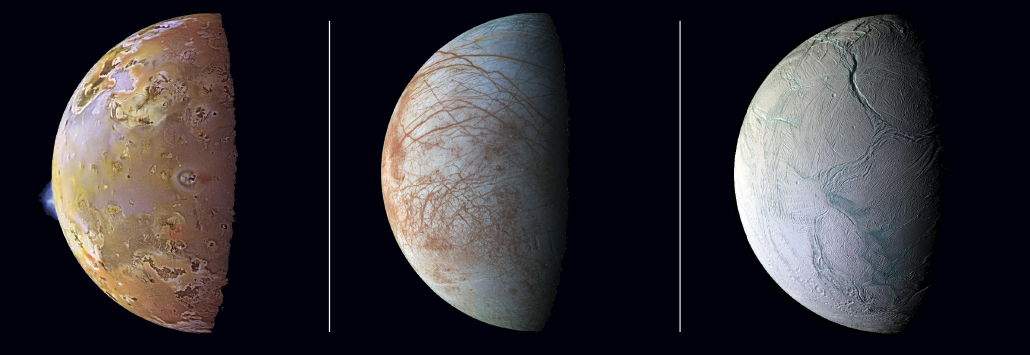
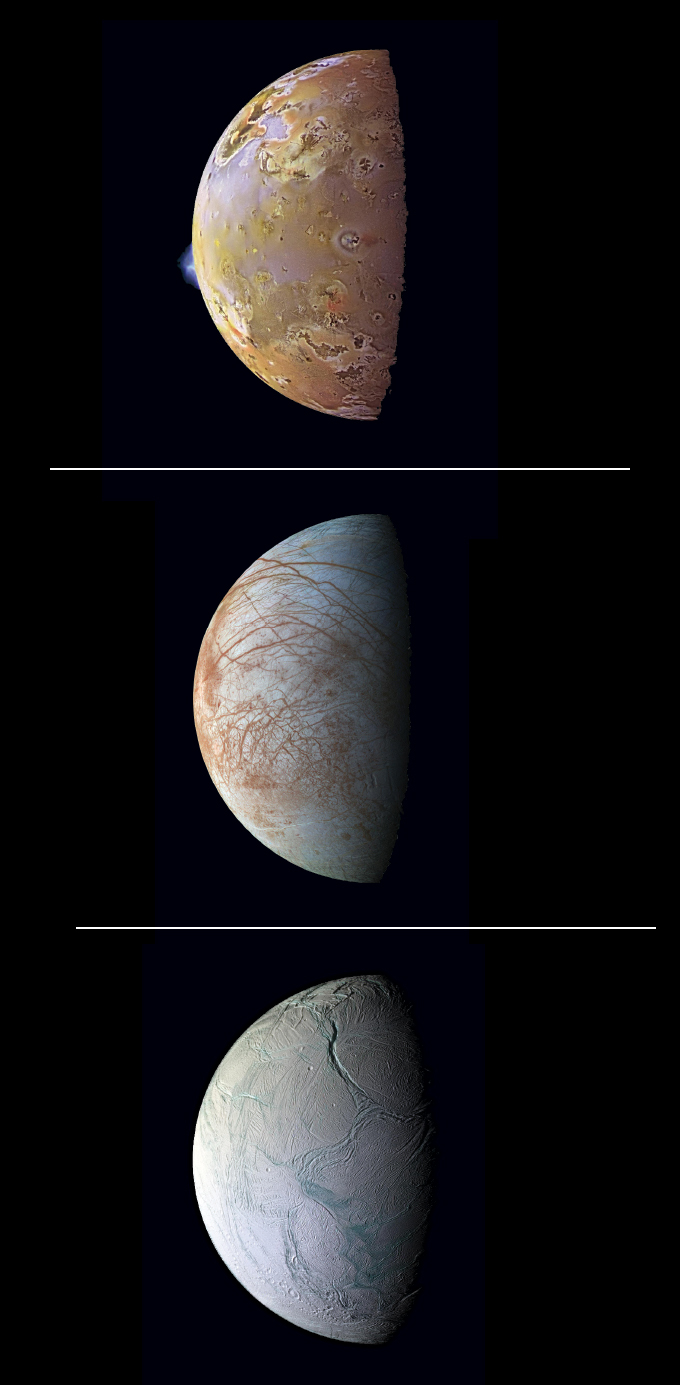
Shortly after the Cassini spacecraft arrived at Saturn in 2004, scientists realized that the tiny moon Enceladus vents dramatic plumes of water vapor, dust and ice crystals into space from a hidden subsurface sea. That moon also looks like a good place for life.
If the last century of exploring the solar system was about coming to grips with alien geology, Hansen says, this coming century is going to be about oceanography — getting a grip on the strange seas in our own solar system.
“I think that’s going to shape a lot of the research going forward,” Hansen says. Now that it’s clear these moons have oceans, researchers will ask if they are habitable, and eventually, if they are inhabited.
Exoplanets detected
The first planet spotted outside our solar system — an exoplanet — was so different from anything in our solar system that astronomers weren’t hunting for anything like it.
“Knowing that there are actually planets around other stars now seems so trivial to say,” says exoplanet observer Debra Fischer of Yale University. “But we had arguments in 1995 about whether other stars have planets.”
So when astronomer Michel Mayor of the Geneva Observatory turned his spectrograph on the sky in April 1994, he kept quiet about his hopes of finding true exoplanets. He was more likely to find brown dwarfs, failed stars that never grew massive enough to burn hydrogen.
His instrument used a clever new way to hunt for other worlds, called the radial velocity technique. Previous exoplanet hunters had looked directly for a star’s motion in response to the gravity of an orbiting planet, watching to see if the star would move back and forth in the sky. That technique had led to several planetary claims, even dating back to 1855, but none of them had held up. Those motions are tiny; Jupiter’s influence moves the sun by just 12 meters per second.
Exoplanet detections
Astronomers have hunted exoplanets with several techniques, some better than others. The earliest claimed exoplanet detections used the astrometry method, but almost none of them held up. Success came with the radial velocity method in the 1990s. But the transit method has proved most prolific.
| Method | Description | Planets discovered |
| Transit | When a planet passes directly between its star and an observer, it dims the star’s light by a measurable amount. | 3,343 |
| Radial velocity | Orbiting planets cause stars to wobble in space, leading to an observable shift in the color of the star’s light. | 866 |
| Gravitational microlensing | Light from a distant star is bent and focused by a planet’s gravity as the planet passes between the star and Earth. | 108 |
| Direct imaging | Astronomers can take pictures of an exoplanet by removing the overwhelming glare of the star it orbits. | 53 |
| Astrometry | The orbit of a planet can cause a star to move visibly on the sky. | 1 |
Instead, Mayor and others studied a shift in the wavelength of starlight as a star moved to and fro. As a star approaches us, the light shifts to shorter, or bluer, wavelengths; as it moves away, the light grows redder. Calculating the velocity of a star’s back-and-forth motion, astronomers could figure out the minimum mass and length of the year of whatever was tugging that star.
The shifts Mayor was looking for were still minuscule. The search was considered futile, and fringe — like looking for little green men. So astronomers who explicitly claimed to be searching for planets had a hard time scheduling observations at telescopes. Brown dwarfs, on the other hand, were considered legitimate science, and would be easier to detect.
So the world was astounded when, in October 1995, Mayor and his student Didier Queloz reported strong evidence not of a brown dwarf, but of a true planet orbiting the sunlike star 51 Pegasi, about 50 light-years from our solar system.
The new planet was weird. It seemed to be about half the mass of Jupiter, too puny to be a brown dwarf. But it orbited the star once every 4.23 Earth days, putting it incredibly close to its star. There’s nothing like that in our solar system, and astronomers had no idea how it could exist.
“The news flashed through the astronomical community like a lightning bolt,” wrote journalist Ron Cowen in Science News, in the first of three stories on the new planet he would write within a month (SN: 10/21/95, p. 260).
51 Peg b, as it came to be known, launched a new era. “It means planets exist around other sunlike stars, we can find them, and they might be the exciting ones,” says Yale anthropologist Lisa Messeri, who has studied how astronomers create worlds out of pixels and spectra. “Firsts are exciting because they promise there will be seconds and thirds and fourths.”
Big surprise
The first planet found orbiting a star similar to our sun fit nobody’s mold. Dubbed a “hot Jupiter,” 51 Pegasi b is bigger than Jupiter, but 20 times closer to its star than Earth is to the sun (Earth is one astronomical unit, AU, or 150 million kilometers from the sun). 51 Pegasi b circles its star in four days; Earth’s orbit is a lengthier 365 days.
A tight orbit for a large planet
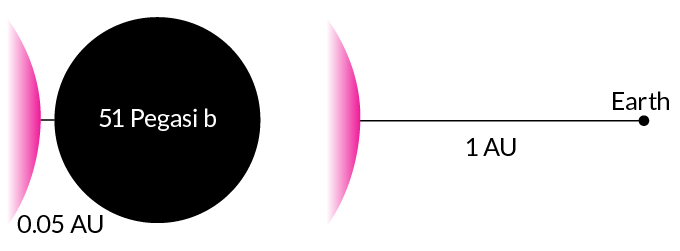
The search was on. A group from San Francisco quickly found two more planets hiding in data the researchers hadn’t finished analyzing yet. Those next two planets, 70 Vir b and 47 UMa b, were also more massive and closer to their stars than expected.
The existence of these three worlds, which were named hot Jupiters because their close-in orbits should make them sizzle, upended the paradigm for what a planet could be like. Clearly, our solar system was not the template for the universe.
Yet for a few years after 51 Peg b was announced, astronomers debated whether the planet was really there. Maybe the star’s apparent back-and-forth was just its outer atmosphere breathing in and out. Those debates waned as more planets were discovered, but it took a new technique to really convince everyone.
Astronomers had predicted at least back to the 1850s that some planets would pass in front of their stars from the perspective of Earth. As it crossed, or transited, the face of its star, a planet could reveal its presence by blocking a little bit of the star’s light.
But if other solar systems are like ours, transits would be incredibly difficult to detect. Our planets are too small and too far from the sun to cast a large shadow. Hot Jupiters, on the other hand, should block way more of a star’s light than any planets in our solar system. With the discovery of 51 Peg b, transits seemed not only possible to detect, but almost easy.
The first transiting extrasolar planet revealed itself in 1999, when then-Harvard graduate student David Charbonneau drove to Colorado to do his thesis work with astronomer Tim Brown. Brown had built a tiny telescope on a friend’s farm north of Boulder, setting up the computers in a repurposed turkey coop, to search for transiting planets. By the time Charbonneau arrived, however, the farm had been sold and the telescope relocated to a lab site.
To practice the technique, Charbonneau aimed Brown’s telescope at a star, called HD 209458, that already had a suspected planet. The star’s light dimmed by about 1 percent, and then it shone bright again. That was a clear sign of a planet about 32 percent wider than Jupiter.
That discovery ended all doubts about the existence of exoplanets, says Fischer, who had worked with the exoplanet-hunting group in San Francisco. “It happened like that,” Fischer says, with a finger snap. The combined size and mass of the planet unambiguously ruled out brown dwarfs or other exotic explanations. “It walks like a Jupiter, talks like a Jupiter, it’s a Jupiter.”
There was another advantage to the transit method: It can show the composition of a planet’s atmosphere. Planets detected by the wobble technique were “little more than phantoms,” Cowen wrote in Science News in 2007. They were too small to be seen, and too close to the star to be photographed directly.
“Everyone had assumed that if you wanted to [detect] the atmosphere of an extrasolar planet, you’d have to image it,” Charbonneau told Science News. But starlight filtering through a transiting planet’s sky could reveal what gases surround the alien world without the need for a snapshot.
Hunt for habitable planets
Transits soon overtook wobbles as the most fruitful planet-finding strategy. That was mostly thanks to the launch of NASA’s Kepler space telescope in March 2009.
Kepler’s mission was explicitly about finding other Earths. For nearly four years, the telescope stared at 170,000 stars in a single patch of sky to catch as many transiting planets as it could. In particular, its operators were hoping for Earth-sized planets in Earthlike orbits around sunlike stars — places where life could conceivably exist.
The years that followed were a boom time for planet finders. By the end of its nearly 10-year run, Kepler had confirmed almost 2,700 planets and thousands more potential planets. Findings went beyond the hot Jupiters to worlds the size of Earth and planets in the “habitable zone,” where temperatures could be right for liquid water.
Discoveries came so quickly that a single new world stopped being a news story. Kepler’s data shifted from revealing new worlds one by one to taking an exoplanet census. It showed that hot Jupiters are not actually the most common type of planet; they were just the easiest ones to spot. The most common type makes no appearance in our solar system: worlds between the size of Earth and Neptune, which may be rocky super-Earths or gaseous mini-Neptunes.
And Kepler revealed that there are more planets in the galaxy than stars. Every one of the billions and billions of stars in the Milky Way should have at least one world in its orbit.
But the telescope never really achieved the goal of finding another Earth. Kepler required three transits to confirm a world’s existence. That means the telescope had to stare for at least three years to find a planet orbiting at Earth’s exact distance.
By 2013, after four years of observing, half of Kepler’s stabilizing reaction wheels had failed. The telescope couldn’t maintain its unblinking view of the same part of the sky. Mission scientists cleverly reprogrammed the telescope to look at other stars for shorter spans of time. But most of the planets found there orbited closer to their stars than Earth does, meaning they couldn’t be Earth twins.
Finally, Kepler ran out of fuel in 2018, with no true Earth analog in sight.
Messeri recalls an exoplanet conference at MIT in 2011 where a lot of the conversation was about finding a twin of Earth.
“It was a peak of excitement — maybe we’re going to find this planet in the next three years, or five years. It felt close,” she says. “What’s interesting is, in the 10 years since then, it still feels that close.”
But astronomers had already realized they might not need a true Earth analog to find a planet where life could exist. Rocky worlds orbiting smaller, dimmer stars than the sun are easier to find, and might be just as friendly to life.
Charbonneau again was ahead of the curve, having started a program called MEarth in 2008 to hunt for habitable planets around puny M dwarf stars using eight small telescopes in Arizona (plus another eight in Chile that were added in 2014). Within six months, Charbonneau and colleagues had found a super-Earth dubbed GJ 1214b that is probably a water world — maybe a bit too wet for life.
The European Southern Observatory started the TRAPPIST, for TRAnsiting Planets and PlanetesImals Small Telescope, survey from La Silla, Chile, in 2010. Another telescope, at Oukaïmeden Observatory in Morocco, came online to search for planets orbiting Northern Hemisphere stars in 2016. Among that survey’s discoveries is the TRAPPIST-1 system of seven Earth-sized planets orbiting a single M dwarf star, three of which might be in the habitable zone (SN: 3/18/17, p. 6).
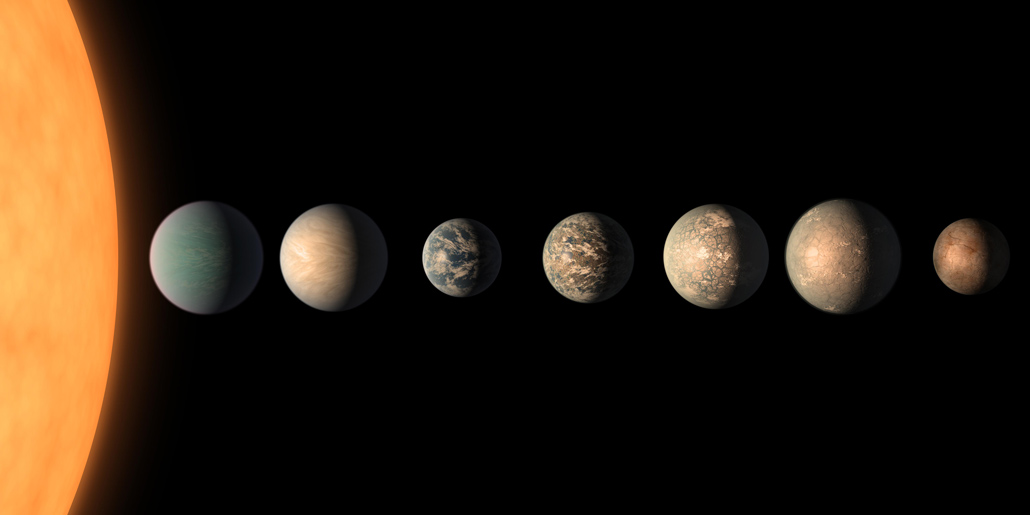
NASA’s successor to Kepler, TESS, or Transiting Exoplanet Survey Satellite, has been scanning the entire sky since April 2018 for small planets orbiting bright nearby stars, including M dwarfs. It spotted more than 2,200 potential planets in its first full-sky scan, scientists announced in March 2021.
These days, astronomers are joining up with scientists across disciplines, from planetary scientists who study hypothetical exoplanet geology to microbiologists and chemists who think about what kinds of aliens could live on those planets and how to detect those life-forms. That’s a big shift from even 10 years ago, Messeri says. In the early 2010s, no one was talking about life.
“You weren’t allowed to say that,” she says. “Astronomers would whisper it to me during fieldwork, but this was not a search for aliens.”
Exoplanet astronomy is on firmer ground now. Its leading figures have won MacArthur “genius” grants. Pioneer planet finders Mayor and Queloz won the 2019 Nobel Prize in physics. The work is no longer hidden away in conferences that are actually about stars. “It doesn’t have to legitimize itself anymore,” Messeri says. “It’s a real science.”
The promise that transiting planets can reveal the contents of their alien atmospheres may soon be fulfilled. NASA’s James Webb Space Telescope may launch this year, after many years of delays. One of its first tasks will be to probe the atmospheres of transiting planets, including those of TRAPPIST-1.
If anything is alive on those absolutely alien, unearthly worlds, maybe the next century will bring it to light.







